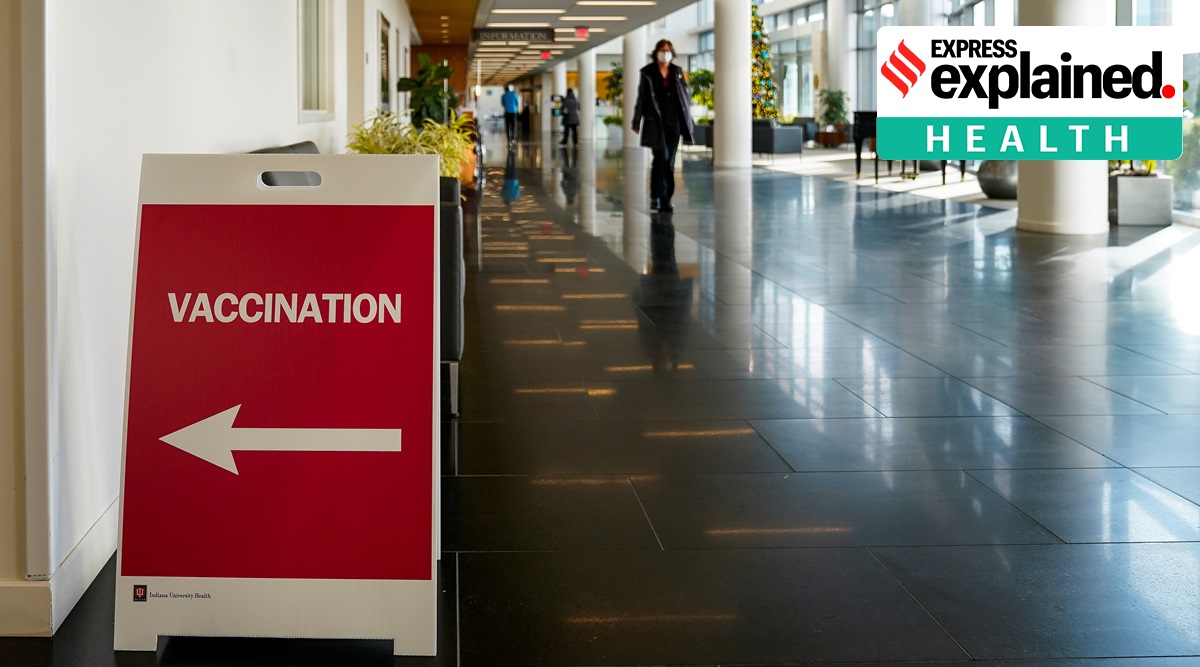
December 12, 2020 3:18:35 pm
 A sign directs healthcare workers to a trial for administration of Pfizer’s coronavirus disease (COVID-19) vaccine at Indiana University Health in Indianapolis, Indiana, USA, December 11, 2020 ( Reuters photo: Bryan Woolston).
A sign directs healthcare workers to a trial for administration of Pfizer’s coronavirus disease (COVID-19) vaccine at Indiana University Health in Indianapolis, Indiana, USA, December 11, 2020 ( Reuters photo: Bryan Woolston).
Pfizer Inc and BioNTech SE received US regulatory clearance for its COVID-19 vaccine on Friday, making it the first new coronavirus vaccine to get regulatory green light in the United States.
The following is what we know about the race to deliver vaccines to help end the coronavirus pandemic that has killed 1.59 million people around the world:
Coronavirus vaccine: who is further advanced?
American pharmaceutical company Pfizer and German partner BioNTech are the pioneers of the coronavirus vaccine. On November 18, they became the first in the world to publish full test data in the last stage. Britain was the first to approve the injection for emergency use on December 3, followed by Canada on December 9 and the US Food and Drug Administration (FDA) on December 11.
The European Medicines Agency (EMA) is due to complete its review of the vaccine by December 29 and India is accelerating its review.
Covid-19 Vaccine: Who Will Be Next?
The American pharmaceutical company Moderna is at the forefront right now. It was the next to publish a full data analysis for a late-stage trial on November 30, with its vaccine showing an efficacy rate of 94.1%. FDA advisers are due to review it by December 17 and the EMA will do so before January 12.
Who else is in the race?
Britain’s AstraZeneca is seeking approval for its vaccine in Britain after announcing provisional data from the last stage of the trial on 23 November. 70% average efficiency rate and up to 90% for a subset of trial participants who received half the dose first, followed by a full dose.
However, it is not clear how the regulator will treat the different doses in the efficacy data in its evaluation. While India is conducting an expedited review, it has requested more data. AstraZeneca is also in discussions with the EMA, which is conducting an ongoing review of the vaccine.
US drugmaker Johnson & Johnson plans to deliver trial data this year, or early 2021, preparing it for US clearance in February if its injection is effective. He lowered the enrollment target for his clinical trial to 40,000 volunteers from 60,000 on Dec. 9, potentially accelerating results that are linked to how quickly participants become infected.
US firm Novavax is conducting a last-stage test in Britain with data expected for the first quarter of 2021. It expects to start a full-scale test in the United States this month.
However, France’s Sanofi and Britain’s GlaxoSmithKline announced a setback on December 11 in their attempts to develop a vaccine. Drug makers said it showed insufficient immune responses in older people in the mid-stage trials and that they would begin a new study in February.
What happens in vaccine trials?
Companies generally test their vaccines against a placebo, usually saline, in healthy volunteers to see if the rate of COVID-19 infection among those who received the vaccine is significantly lower than among those who received the sham injection. 
How do volunteers get infected?
The trials rely on subjects being naturally infected with COVID-19, so the time it takes to generate results depends largely on how widespread the virus is where the trials are conducted. Each pharmacist has targeted a specific number of infections to trigger a first analysis of their data.
How well are vaccines supposed to work?
The World Health Organization ideally wants to see at least 70% efficacy. The FDA wants at least 50%, which means there must be at least twice as many infections among the volunteers who received a placebo than among those in the vaccine group. The EMA has said it can accept a lower level of effectiveness.
And Russia and China?
While the Pfizer injection was the first to be implemented following the release of the full phase III trial data, Russia and China have been vaccinating their citizens for months with several different vaccines that are still in late-stage trials.
Russia said on Nov. 24 that its Sputnik V vaccine, developed by the Gamaleya Institute, was 91.4% effective according to interim results from the last stage of the trial. It began vaccinations in August and has so far inoculated more than 100,000 people.
AstraZeneca said on December 11 that it would test a combination of its vaccine with one of the two components in Sputnik V to try to increase the efficacy of the injection it is developing with the University of Oxford.
China launched an emergency use program in July targeting essential workers and others at high risk of infection. It has vaccinated around a million people in mid-November using at least three injections, two developed by the state-backed China National Biotec Group (CNBG) and one by Sinovac Biotech.
Sinovac said Nov. 18 that results from the mid-stage trial showed that his CoronaVac injection triggered a rapid immune response and that interim data from his late-stage trial could arrive this year.
The Butantan Institute, a Brazilian biomedical center, is producing CoronaVac and aims to produce 1 million doses a day ahead of a vaccine campaign due to launch in late January.
Meanwhile, the United Arab Emirates said on December 9 that one of the CNBG vaccines was 86% effective based on interim results from a late-stage trial in the Arab Gulf state.
.